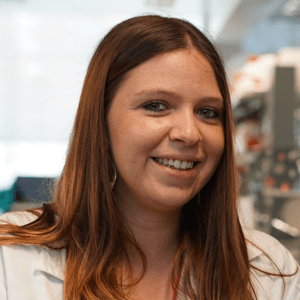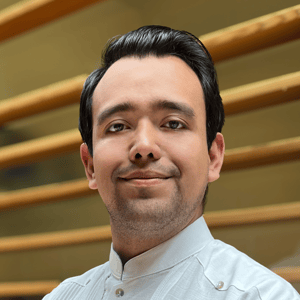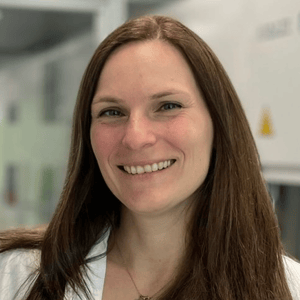For the 11th edition of the fellowship program, IBSA Foundation offered six fellowships of 32,000 euros each in the following fields of research: dermatology, endocrinology, fertility/urology, pain medicine/orthopaedics/rheumatology, and two for the 2023 special edition “Healthy Aging/Regenerative Medicine.” The 2023 edition had a record number of projects received. A total of 248 applicants, mostly women, from over 50 countries.
The Awards Ceremony was held online on June 25, 2024.
At the award ceremony, the scholarships were presented by Silvia Misiti, Director of IBSA Foundation for Scientific Research and Christian Wolfrum, Vice President for Research at ETH Zurich.
“Enhancing talent by investing in new generations of researchers is among the activities to support scientific research, promoted by our Foundation, the one that has probably given us the greatest satisfaction over the years. “ - says Silvia Misiti, Director of IBSA Foundation - ”We know how difficult it can be today for young graduates to take the path of research, and we hope that the Fellowships project can help give substance to the expectations and hopes of many future scientists. The interest shown over the years in this program by so many girls and boys around the world makes us think we are on the right track.”
Below you can find the names of the six winners, the title and description of their project:
Winners
Dermatology: Katharina Wöss
Institute for Research in Biomedicine (IRB Barcelona), The Barcelona Institute of Science and Technology (BIST), Barcelona, (Spagna)

Project title:
The incidence of chronic inflammatory disorders and their associated comorbidities is rapidly rising worldwide. Epidemiological studies suggest that certain skin inflammatory disorders are associated with a differential risk of developing specific cancers. Despite progress in understanding the local pathology of these inflammatory conditions, many involve systemic, organismal effects that remain poorly understood. In this project, we will characterize local and systemic effects of skin inflammatory factors and cell types, and define their roles as distal-acting mediators shaping cancer susceptibility at distant sites. To do so, we will integrate single-cell transcriptional data mapping the inflammation-sensing capacity of mutant pre-neoplastic cells and cancer-prone in vivo models, enabling functional interrogation of their responses to skin inflammatory disorders. We expect that this project will define whether and how systemic inflammation functionally contributes to tumorigenesis and reveal organismal-level inflammatory mechanisms that may pave the way for new opportunities to intercept cancer development.
Interview
Endocrinology: Cintia Folgueira Cobos
Spanish National Center for Cardiovascular Research Carlos III (CNIC), Madrid, (Spagna)

Project title:
Obesity, characterized by an excess of adipose tissue, is a serious global health
problem associated with an increased risk of life-threatening diseases.
The brown adipose tissue (BAT) is now recognized as a complex and multifaceted organ, playing an essential and highly active role in the regulation of metabolism.
In this process, mitochondria are central component of energy consumption and need to adapt to changes in energy demands.
Our proposal suggests that the absence of a specific novel mitochondrial protein facilitates the modulation of BAT mitochondrial activity, leading to a reduction in body weight, amelioration of hyperglycemia, and activation of BAT thermogenesis. This elevation in energy expenditure occurs without notable changes in food intake or locomotor activity in obese mice.
A deeper understanding of how adipocyte mitochondria function in response to diverse external stimuli opens avenues for potential therapeutic manipulation involving our protein candidate.
Drawing upon our preliminary data, we anticipate that unravelling how mitochondrial dysfunction influences the energy balance will contribute significantly to comprehending the intricate regulatory mechanisms governing BAT function.
This understanding, in turn, holds the potential to offer valuable insights into prospective therapeutic targets for addressing obesity and related metabolic disorders, particularly by underscoring that the absence of this mitochondrial protein correlates with improvements in obesity, adiposity, and glucose tolerance.
Interview
Fertility/Urology: Elias Rafael Ruiz Morales
Wellcome Sanger Institute and the University of Cambridge, (UK)

Project title:
The placenta acts as a maternal-fetal barrier that provides nourishment and protection from infections. However, certain pathogens can attach to and even cross the placenta, causing pregnancy complications with potential lifelong impacts on the child’s health. Here, we aim to profile at the single-nuclei level over 50 term placentas from mothers with malaria infection at the time of delivery. We will describe the placental responses to the human malaria parasite Plasmodium falciparum, associated with intrauterine complications resulting in fetal growth restriction and miscarriages. We will characterise how all placental lineages trigger innate immune responses that may help controlling the infection while compromising placental functions. Additionally, we will focus on the responses of fetal macrophages known as Hofbauer cells, to elucidate their function during placental malaria infection. Altogether, we will define the cellular networks and signalling pathways mediating placental responses to malaria infection. The resulting data produced from this research will be publicly available to enhance its impact to facilitate the design of novel therapeutic strategies.
Interview
Pain Medicine / Orthopaedics / Rheumatology: Helna Mary Baby
Department of Bioengineering, Northeastern University, Boston, (USA)

Project title:
The progress in mRNA therapy for Osteoarthritis (OA) remains stagnant due to its short half-life and delivery challenges within articular joints.
Currently, the delivery of RNA to cartilage is limited due to poor tissue penetration and chondrocyte uptake for drug carriers, such as lipid nanoparticles, polymeric micelles, or exosomes.
To circumvent these hurdles, we developed an arginine-rich short-length cationic peptide with a net charge of +14 (CPC+14R) that resulted in full-depth cartilage penetration and retention. In this proposal, we leverage the cationic peptide to surface-modify mesenchymal stem cell-derived exosomes (40-200 nm) to impart an overall positive charge to deliver interleukin-1 receptor antagonist (IL-1Ra) mRNA as a diseasemodifying agent.
IL-1Ra inhibits the deleterious effect of IL1 on cartilage damage and modulates nociceptive pain. To enhance the longevity of expression, in-situ RNA circularization (icRNA) is employed, which allows linear mRNA to be circularized inside the chondrocytes.
The cationic exosomes allow for full-depth tissue penetration and superior chondrocyte uptake efficiency through electrostatic interactions with negatively charged proteoglycans in cartilage. Collectively, this approach will enhance the expression of IL1Ra, eliminating the need for multiple intra-articular injections, thus creating a paradigm shift in gene therapy for OA.
This holistic treatment approach ameliorates cartilage degradation and OA-associated chronic pain, thereby profoundly improving the well-being of millions suffering from this condition. Furthermore, our engineered cationic exosomes hold the translational potential to deliver a wide array of disease-modifying genes for other joint conditions, including intervertebral disc degeneration.
Interview
1st Winner - Healthy Aging/Regenerative Medicine: Maria Angela De Stefano
Azienda Ospedaliera Università Federico II (AOU), Napoli, (Italia)

Project title:
Muscle stem cells (MuSCs) are responsible for generating new myofibers during postnatal muscle development and regeneration.
A fundamental feature of adult stem cells is quiescence. Although significant advancement has been made for comprehending the complex signals governing the quiescence state, they still remain mostly unknown. The active thyroid hormone T3 derives either directly from the thyroid or is generated by deiodination of the prohormone T4.
Much of the intracellular T3 in muscle derives from deiodinase D2, while D3 exerts an opposite function, catalyzing the degradation of T4 and T3.
Our preliminary data indicated that D2 and D3 are essential components of the muscle stem cell myogenic program (1, 2). The general objective of this proposal is to dissect the role of TH signaling and of the local contribution of deiodinases, to the control of muscle stem cell quiescence (SA-I) and identify the signal pathways through TH exerts these effects (SA-II). Using genetically manipulated mouse lines, we aim to determine how deiodinases control quiescence and muscle regeneration.
In particular, in SA-I, we will characterize the effects of MuSC-specific D2-depletion in vitro and in vivo. We will evaluate whether the absence of D2 will affect the equilibrium between quiescent stem cells (q-MuSCs) and activated stem cells (a-MuSCs). In SA-II, by means of bioinformatics analysis from RNA-seq, performed on MuSCs wild type and MuSCs Dio2-depleted, will get insight into the molecular mechanisms underlying TH control of MuSC quiescence.
Overall, these studies will establish how the selective control of intracellular TH concentration could be exploited to enhance rate-limiting steps in muscle regeneration, in modulating stem cell expansion and/or differentiation in a therapeutic context, and how this might contribute to optimizing regenerative events in human diseases.
Interview
2nd Winner - Healthy Aging/Regenerative Medicine: Viola Moscarda
Molecular Oncology Laboratory, Institute of Oncology Research (IOR), Università della Svizzera Italiana (USI) (Svizzera), University of Verona and Verona University Hospital Trust, Verona, (Italia)

Project title:
Cancer treatments can induce accelerated aging and age-related diseases in cancer survivors through induction of cellular senescence. The pharmacologic removal of senescent cells holds potential as an innovative approach to limit toxicities of current chemotherapies, with subsequent improvement in health span and life span of cancer survivors by fostering healthy aging. A therapeutic approach that can clear senescent cells by targeting them selectively, efficiently, and safely could involve CAR-T cells aimed at senescence-specific surface antigens. It has been demonstrated by Amor et al., that targeting uPAR, a cell surface protein induced during senescence, with specific CAR-T cells could efficiently ablate therapy induced senescent cells in vitro and in vivo, while extending the health span and life span of mice affected by lung adenocarcinoma as well as that of naturally aged mice. Researchers at the hosting laboratory characterized the transmembrane protein repertoire of senescent murine prostate tumor cells through proteomic analysis and identified a protein named SENO2, which is strongly upregulated in senescent cells compared to non-senescent ones. The identified target was also validated in different human prostate cancer cell lines after senescence induction with chemotherapy and in models of oncogene induced senescence. The hosting lab has already developed and patented a second-generation CAR construct against the human SENO-2 as the antigen recognition domain and the transmembrane and intracellular domain of the costimulatory CD28 and CD3ζ proteins. In parallel, they are currently generating a CAR construct recognizing the mouse SENO-2. This project aims to investigate the efficacy and safety of CAR-T cell therapy targeting the SENO-2 protein in healthy cells as a novel senolytic approach for relieving chemotherapy-induced side effects related to senescence, with the goal of reversing aspects of cellular aging while promoting healthy aging.
Interview

